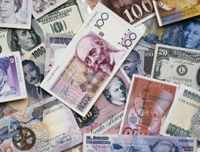Making Currencies that Last
By Nathan Lewis

The dollar-centric world currency system, which appeared after World War II, is likely to come to an end. This implies, of course, the emergence of a new system. Forward-thinking governments should be preparing for this eventuality. According to recent rumors, plans for new, gold-linked currencies are already being made.
The post-WWII system, known as the Bretton Woods system, was also a gold-linked system. After the war, with Europe and Japan in ruins, the U.S. dollar was the sole remaining gold-linked currency of international stature. In time, other countries linked their currencies to the dollar, like planets revolving around a golden sun.
Good intentions alone are not enough to manage a currency. These new currency managers must be intimately familiar with the proper methods of maintaining a currency-gold link. Without this knowledge, their experiments are likely to end in tragedy.
We have seen that formal, mechanistic currency-board systems -- as are used by Hong Kong or Estonia -- work well. However, the informal, ad-hoc "currency pegs" used in the past by Thailand or Malaysia have blown up over and over. A gold-linked currency should operate like a "currency board with gold," with all the reliability and automatic functionality of currency boards today.
Currency boards work because they are based on a simple principle -- supply and demand. When the currency's value is a bit above its target, the currency board system automatically adds a little base money, which tends to depress the currency's value. When the currency is a bit below its value target, the automatic currency board system reduces the supply of base money, leading to a rise in currency value. This happens on a daily basis.
Notice that there is no central bank governing board. There are no interest rate targets, monetary aggregate targets, or CPI targets. There is no "monetary policy" at all.
One reason the dollar left gold in 1971 is that the Bretton Woods gold link was not a currency board-type system. It had more in common with the ad-hoc "currency pegs" that failed so spectacularly in 1997-1998. The Federal Reserve was fooling around with interest rate targets and economic manipulation just as it is today. This is directly contrary to the type of supply adjustments a currency board-type link would perform. Eventual failure of the gold link was inevitable.
It did not matter that the U.S. government held mammoth quantities of gold. In 1942, the U.S. government held 78% of all the gold held by governments around the world, and 52% of all the aboveground gold in the world. These are likely the highest levels of ownership concentration in world history. The proper mechanism of maintaining a gold-linked currency is supply adjustment, as a currency board operates. It should be obvious that metal in a vault is not going to perform this supply adjustment function. That takes competent currency managers.
Over time, the U.S. government gradually sold off this mammoth hoard of gold. The government attempted to maintain the dollar/gold link through what amounted to "forex interventions." However, these actions were, in the modern terminology, "sterilized interventions." They did not reduce the supply of dollar base money, as a currency board would have done. Without this reduction in supply, the dollar's value was not reliably supported. The result was that the interventions ultimately failed, as such interventions inevitably do.
We can compare the U.S.'s short-lived "ad-hoc currency peg" scheme with the experience of the Bank of England. The U.S. system failed in less than thirty years, despite starting with unprecedented gold reserves. In 1910, the Bank of England had maintained a gold-linked currency for over two hundred years. The Bank of England operated a system much more like today's currency boards. It adjusted base money directly. As a result, the Bank of England needed very little gold. In 1910, the Bank of England held a tiny 4% of all the gold held by governments worldwide, and only 1% of all the gold in the world. What the Bank of England had, and the U.S. did not, was competent currency managers. Unfortunately, two world wars and the increasing popularity of monetary manipulation since the Great Depression put an end to this amazing winning streak.
Currency managers who understand the currency board-type supply adjustment process will succeed. Those who do not will fail. It is that simple. The amount of gold in vaults is irrelevant. Indeed, as the currency managers of Russia, China, Malaysia, Korea, Vietnam or the United Arab Emirates fully familiarize themselves with this technique, they will gain a powerful confidence. They will understand, before even starting, that success is certain. And then -- only then! -- should they put their plans into action.
The country that implements a "currency board linked to gold" will have the international currency of the future.
Nathan Lewis is the author of Gold: the Once and Future Money (2007), now available in five languages including Chinese and Korean. His website is www.newworldeconomics.com
Subscribe to Pravda.Ru Telegram channel, Facebook, RSS!




